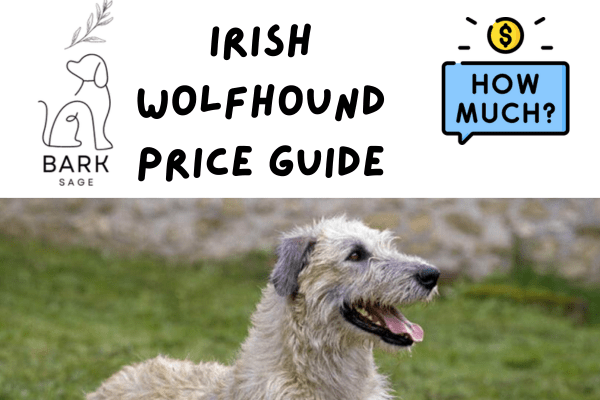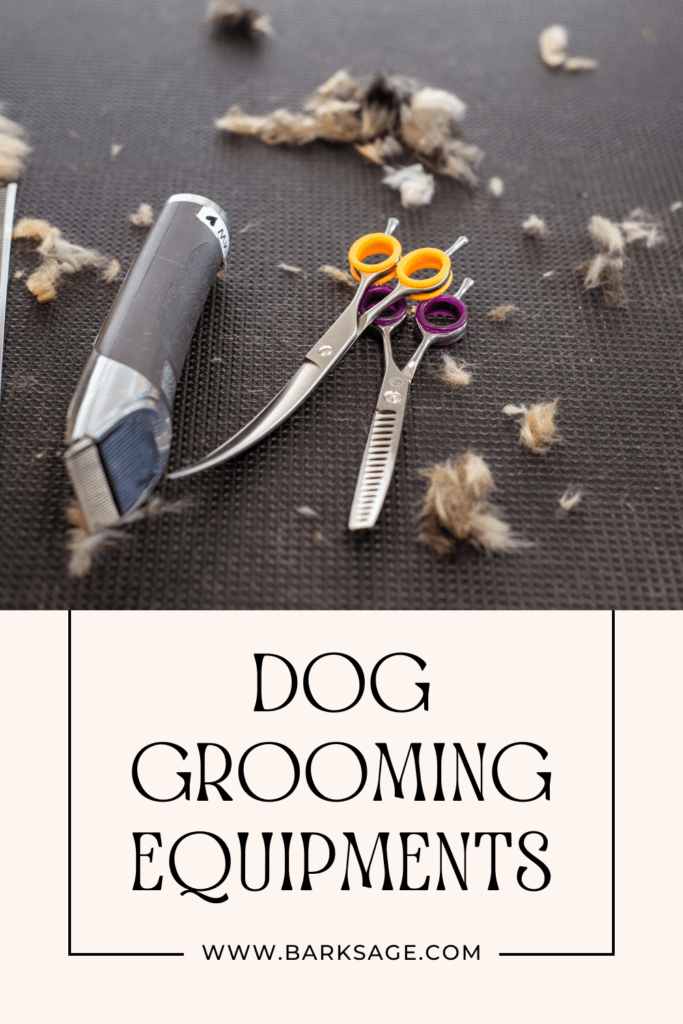Irish Wolfhound Price: Guide For Wanna-Be Owners
If the price of an Irish Wolfhound is why you visited Barksage, then we’ve got you covered. Owning a pet is a big decision, and the Irish wolfhound is a breed that stands out. It’s one of the biggest dog breeds, known for its stunning looks and calm nature. But, the cost of getting and keeping an Irish wolfhound is something to think about. In the course of this article, we will cover a detailed guide to the price of Irish Wolfhound. Without further ado, let us delve in.
Short Answer To The Price Of Irish Wolfhound
The Irish wolfhound price range is affected by the source. Buying from a good breeder can cost between $1,500 and $2,500. But, getting one from a rescue or shelter can be much cheaper, from $300 to $600.
Key Takeaways
- The initial cost of an Irish wolfhound can range from $1,500 to $3,000 or more, depending on the breeder and the pup’s lineage.
- Ongoing expenses, such as food, veterinary care, and grooming, can add up to several thousand dollars per year.
- Irish wolfhounds have a lifespan of 6-8 years, so the total cost of ownership can be significant over the dog’s lifetime.
- Potential owners should consider their financial situation and lifestyle before committing to an Irish wolfhound.
- Responsible breeders and rescue organizations can be excellent sources for finding an Irish wolfhound that fits your budget and needs.
Irish Wolfhound Breed Overview
The Irish wolfhound is a majestic breed, known for its grand size and rich history. These gentle giants were once highly valued in ancient Ireland. They were feared hunters and loyal companions. Their legacy still fascinates dog lovers worldwide.
Temperament and Characteristics
Despite their large size, Irish wolfhounds are calm and gentle. They are patient, affectionate, and deeply loyal to their families. Often called “big teddy bears,” they get along well with children and other pets. They are also smart and easy to train, making them great family pets.
The Irish wolfhound is one of the tallest dog breeds, reaching up to 32 inches tall and weighing up to 180 pounds. They have a shaggy coat in various colors like gray, brindle, red, black, or white. Their long, muscular limbs add to their elegant and regal look.
History and Origins
These dogs trace their roots back to ancient Ireland, where they were valued for their hunting skills and guarding abilities. They were used to hunt wolves, which were common in the area, hence the name “Irish wolfhound.” The breed almost disappeared, but breeders in the 19th century worked hard to save it.
Now, the Irish wolfhound is a beloved companion breed. They are cherished for their gentle nature and majestic look. Even though they’re no longer used for hunting, they still win the hearts of dog lovers with their unique mix of size, strength, and gentleness.
| Characteristic | Description |
|---|---|
| Size | Height: 28-32 inches at the shoulder Weight: 105-180 pounds |
| Coat | Shaggy, rough, and wiry, with various color variations including gray, brindle, red, black, and white |
| Temperament | Calm, gentle, affectionate, and tolerant of other household pets |
| Origin | Ancient Ireland, where they were used for hunting wolves and serving as loyal companions |
Detailed Pricing Guide For Irish Wolfhound
Thinking about getting an Irish wolfhound? The cost is a big part of the decision. The price can change a lot based on where you get the dog, its age, and any extra needs or training it has. It is important to note that the age of the dog plays a part in the cost. Puppies need more training and socializing, so they’re pricier. Adults or seniors might be cheaper since they’re already trained a bit.
| Source | Average Cost |
|---|---|
| Breeder | $1,500 – $2,500 |
| Rescue/Shelter | $300 – $600 |
Buying an Irish wolfhound is just the start of the costs. They need a lot of vet care, good food, grooming, and training. These can add hundreds or thousands of dollars a year.
“The Irish wolfhound is a majestic breed that comes with a price tag to match its impressive stature. However, for those willing to make the commitment, the joy and companionship these dogs provide can be truly priceless.”
Before getting an Irish wolfhound, do your homework and plan your budget. Knowing the Irish wolfhound price range and the ongoing costs helps you make a smart choice. This way, you can give your new dog the best care possible.
Cost of Adopting an Irish Wolfhound
While adopting is often more affordable than buying a puppy, it’s important to remember that the initial adoption fee is just the beginning. You’ll likely incur costs for vaccinations, microchipping, and possibly spaying or neutering.
Quick Facts About Irish Wolfhounds
- Gentle Giants: Known for their calm and affectionate nature.
- High Maintenance: Their size requires extra care and attention.
- Health Concerns: Prone to certain health issues like bone and joint problems due to their large size.
Factors Affecting Irish Wolfhound Prices
The price of purchasing an Irish Wolfhound puppy can vary significantly. Key factors include:
- Breeder Reputation: Reputable breeders often charge more but offer healthier puppies.
- Bloodline and Pedigree: Puppies with champion bloodlines command higher prices.
- Puppy’s Age, Gender, and Color: Rare colors or specific genders might influence the cost.
Monthly Costs and Expenses
Owning an Irish Wolfhound comes with ongoing expenses:
- Food: Due to their size, you’ll need to budget for a substantial amount of high-quality food.
- Veterinary Care: Regular check-ups, vaccinations, and potential treatments for breed-specific health issues add up.
- Grooming: While their coat is relatively low-maintenance, professional grooming might be needed occasionally.
- Other Expenses: Consider items like toys, beds, crates, and training classes.
Medical Expenses
Irish Wolfhounds are prone to certain health issues, such as bone and joint problems. Anticipate higher-than-average veterinary costs.
Remember: The true cost of owning an Irish Wolfhound goes beyond the initial purchase price. Their size and specific needs require a significant financial commitment. However, the joy and companionship they offer are priceless for many devoted owners.
Conclusion
Owning an Irish wolfhound is a unique experience that needs careful thought. These dogs are big and need lots of space and a big budget. They also require a lot of care and attention.
This article covered the costs of owning an Irish wolfhound. We talked about adoption fees, food, vet bills, and where they’ll live. Knowing these costs helps people plan and save for having an Irish wolfhound at home.
If you want to own an Irish wolfhound, learn about their history and how to care for them. It’s also good to connect with Irish wolfhound adoption groups for advice. With the right planning and commitment, families can have a great time with these noble dogs.
FAQ
What is the typical cost of an Irish wolfhound?
The price of an Irish wolfhound can range from $1,500 to $3,000 or more. This depends on the dog’s age, lineage, and any special needs or training. These factors can change the overall cost.
Where can I purchase an Irish wolfhound?
You can get an Irish wolfhound from a breeder, a rescue organization, or by adopting one. Breeders usually have puppies. Rescue organizations and adoption centers may have adult dogs.
What are the ongoing costs of owning an Irish wolfhound?
Owning an Irish wolfhound means more than just the initial cost. You’ll need to pay for food, vet care, grooming, and training. These costs can be $1,500 to $3,000 or more a year. It depends on the dog’s needs and where you live.
Are there any special considerations for caring for an Irish wolfhound?
Irish wolfhounds need a lot of space, a good diet, and regular exercise. They are a giant breed. They also live about 6-8 years, so owners must be ready for the emotional and financial commitment of a large dog with a short life.
How can I find a reputable Irish wolfhound breeder?
Look for breeders who are part of the Irish Wolfhound Club of America and follow strict breeding standards. Always visit the breeder, meet the parents, and ask about the dog’s health and temperament.
Attachments area
| ReplyForwardYou can’t react with an emoji to this message in spam |


